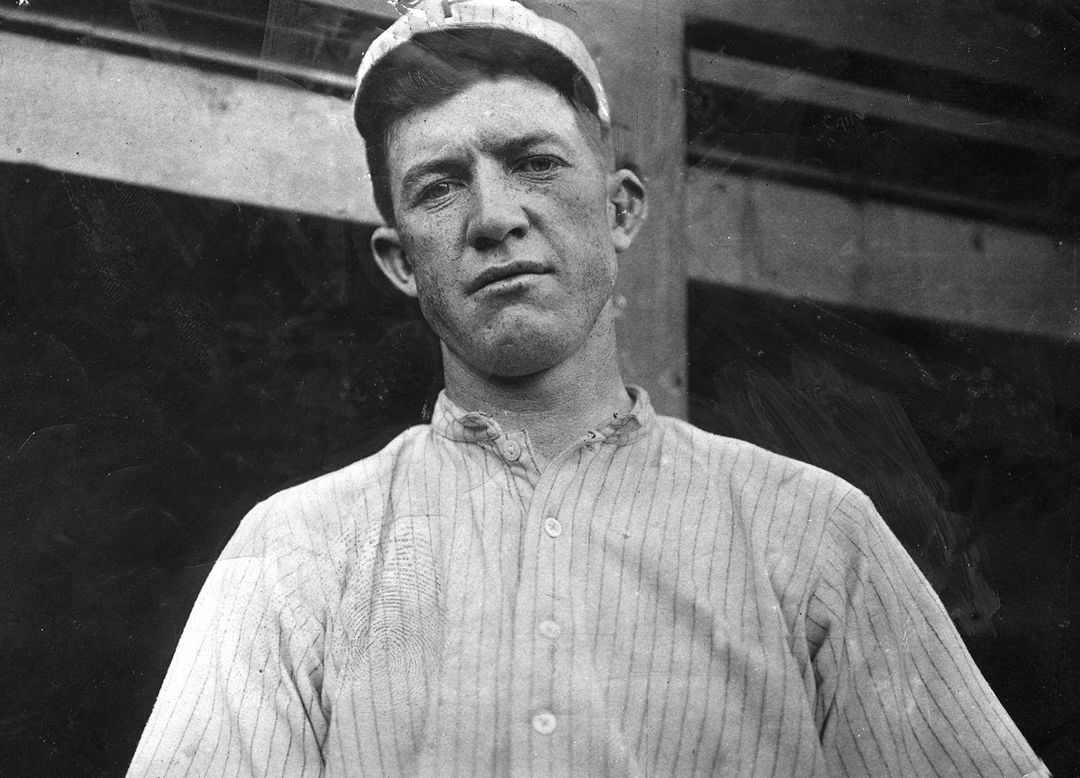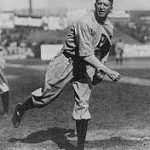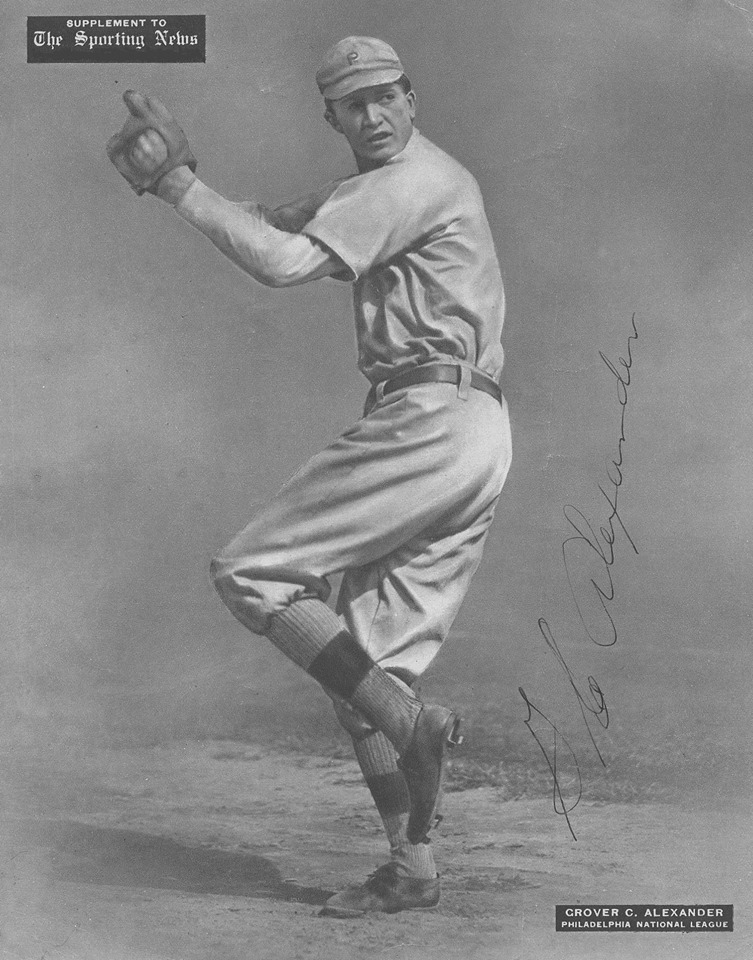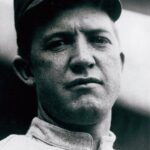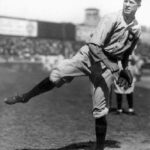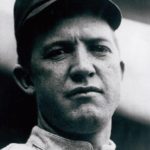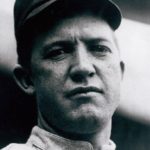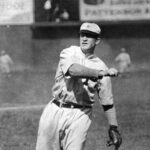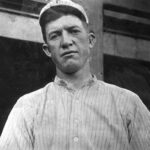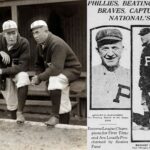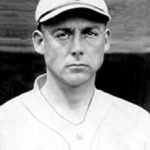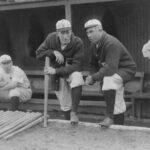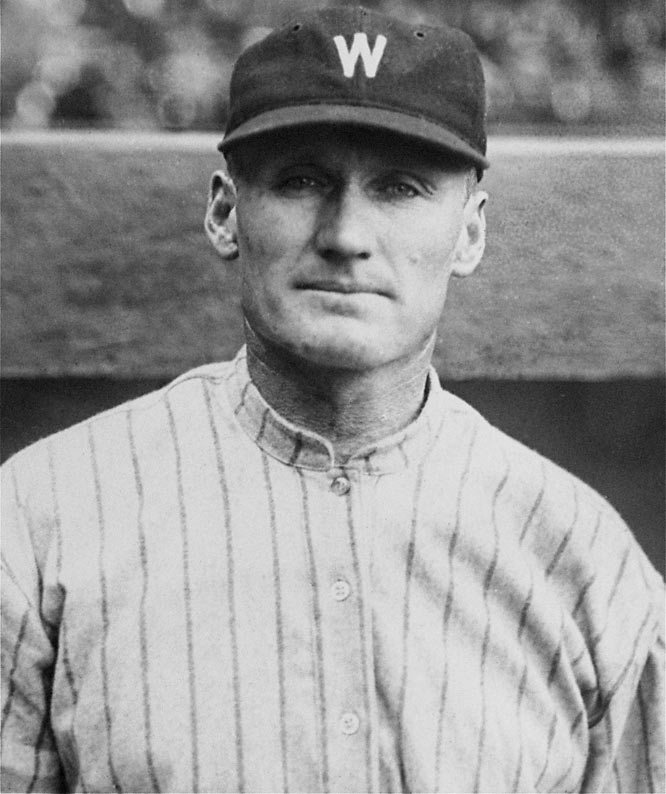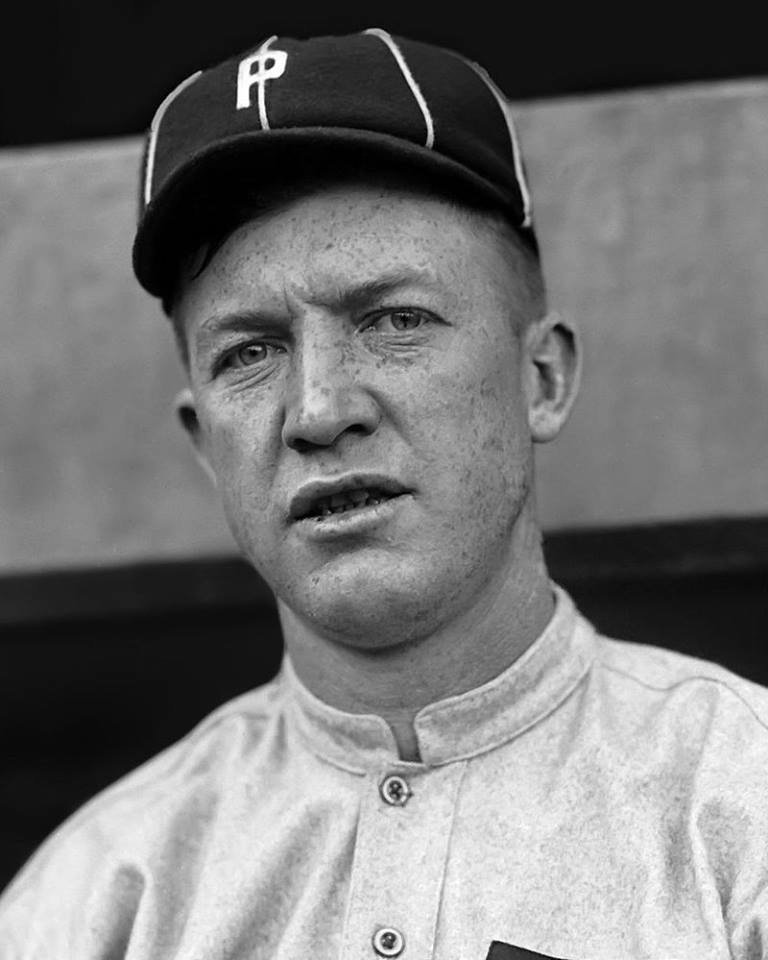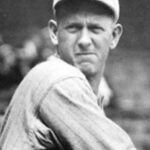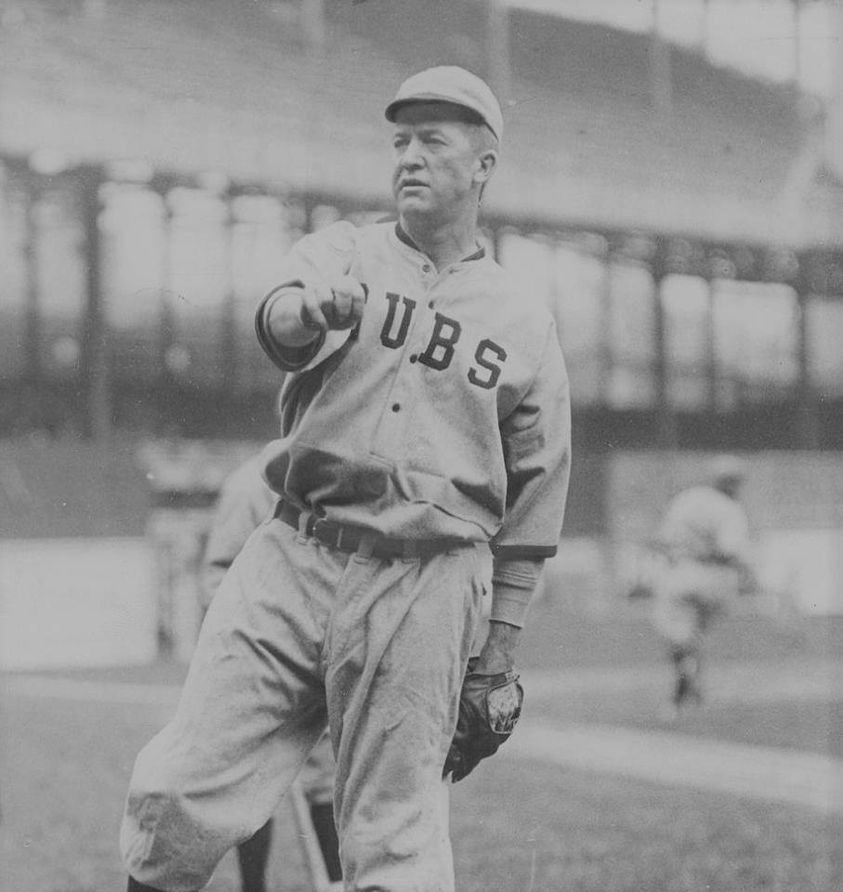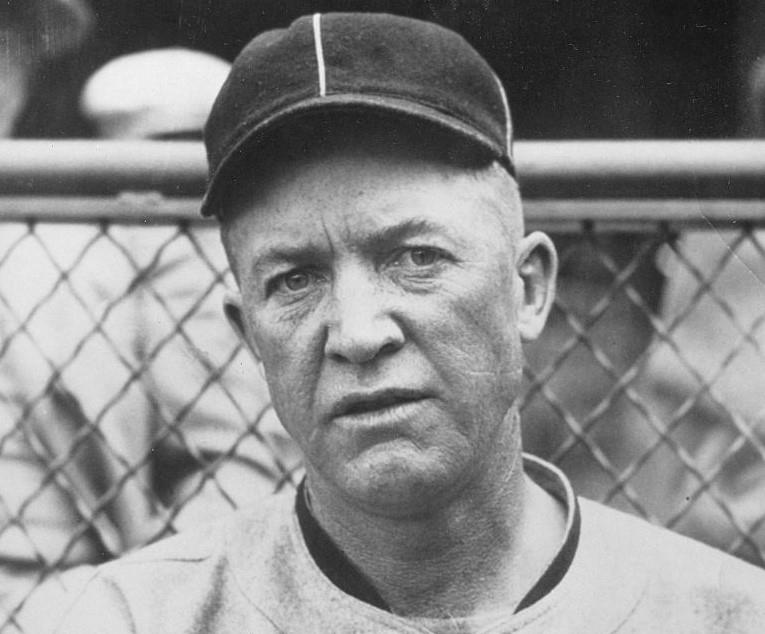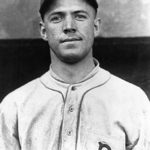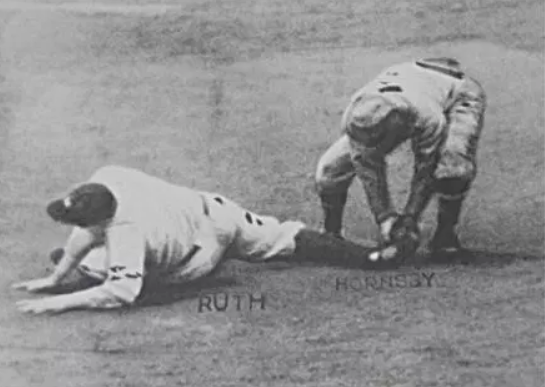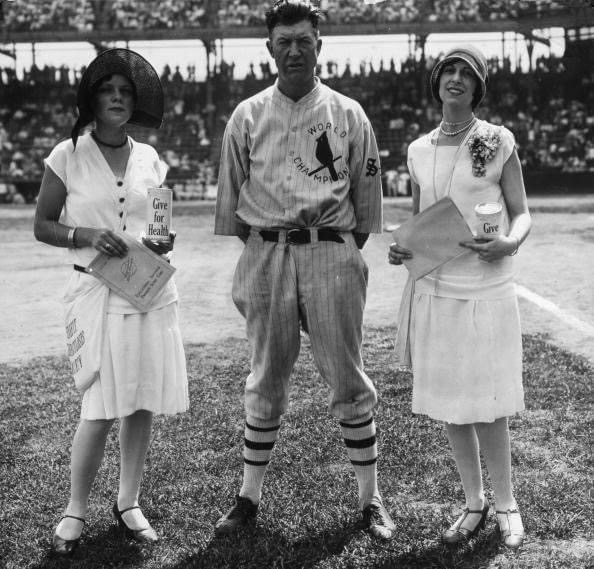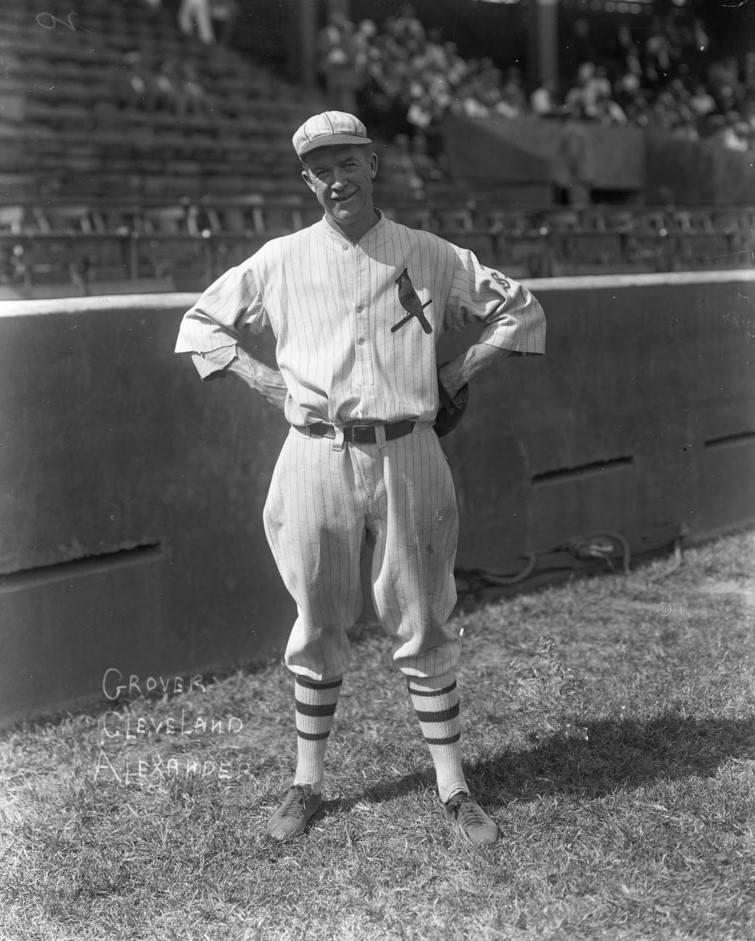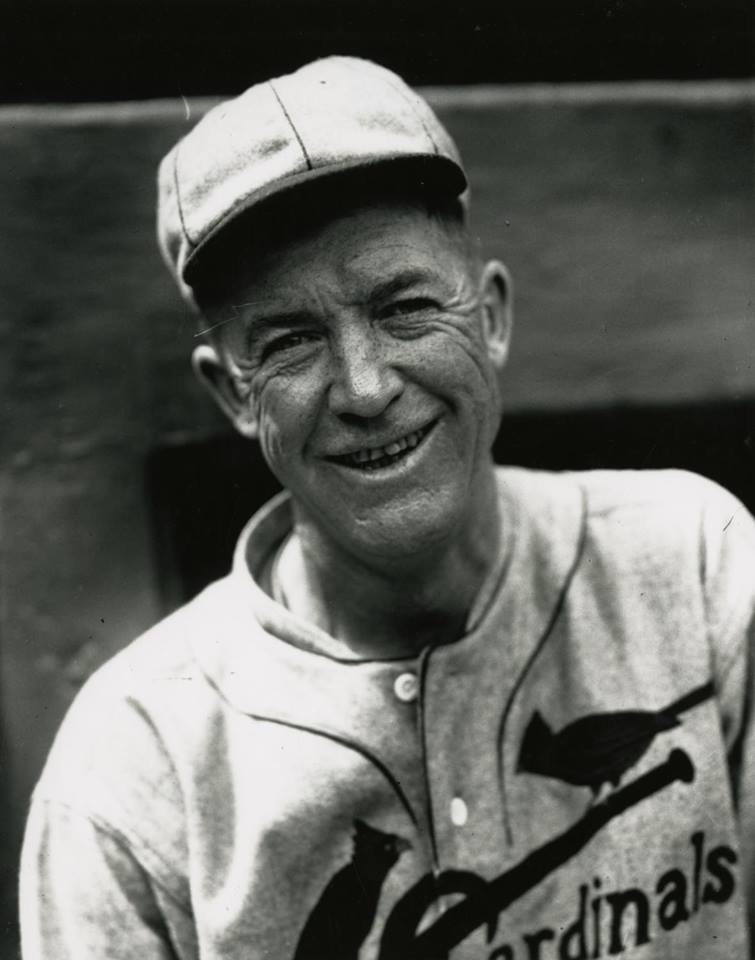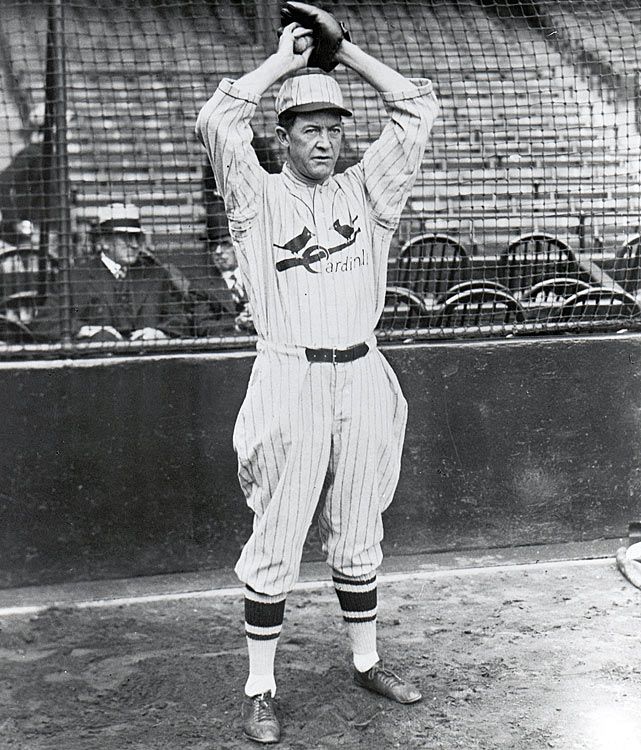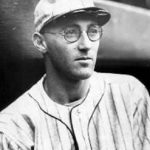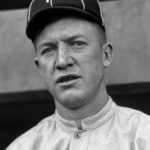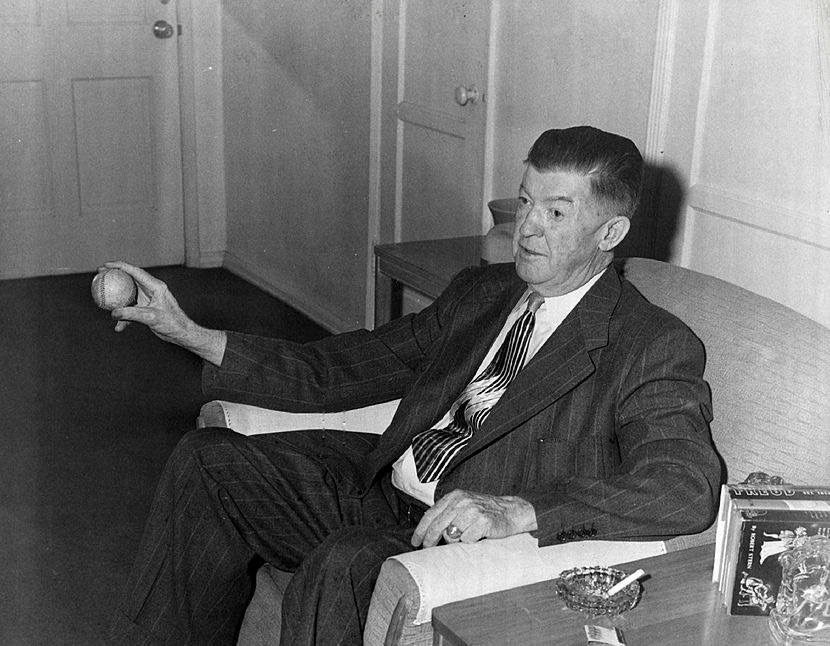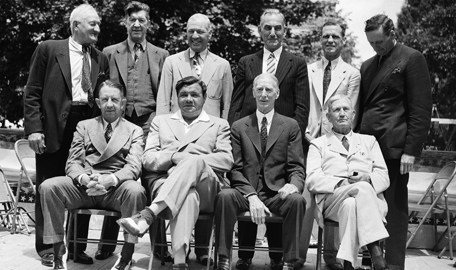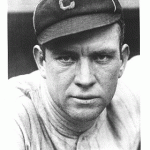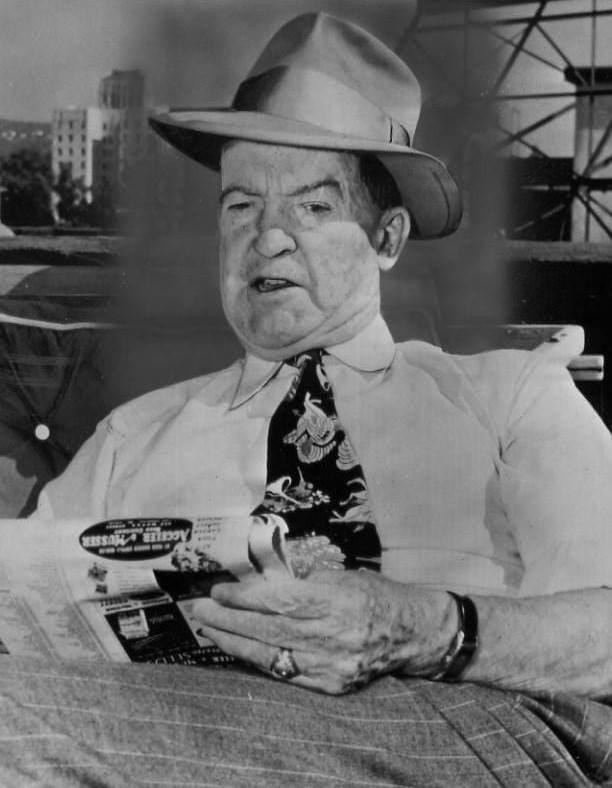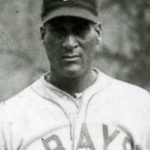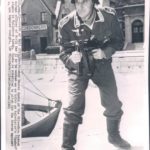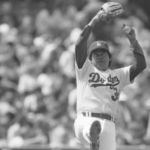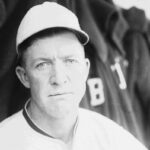Pete Alexander Stats & Facts
Pete Alexander
Position: Pitcher
Bats: Right • Throws: Right
6-1, 185lb (185cm, 83kg)
Born: February 26, 1887 in Elba, NE
Died: November 4, 1950 in St. Paul, NE
Buried: Elmwood Cemetery, St. Paul, NE
High School: St. Paul HS (St. Paul, NE)
Debut: April 15, 1911 (3,461st in major league history)
vs. BSN 9.1 IP, 8 H, 4 SO, 5 BB, 0 ER, L
Last Game: May 28, 1930
vs. BSN 2.0 IP, 2 H, 1 SO, 0 BB, 0 ER
Hall of Fame: Inducted as Player in 1938. (Voted by BBWAA on 212/262 ballots)
Induction ceremony in Cooperstown held in 1939.
Full Name: Grover Cleveland Alexander
Nicknames: Old Pete
Nine Players Who Debuted in 1911
Pete Alexander
George Burns
Jeff Pfeffer
Claude Hendrix
George Mogridge
Sherry Smith
Red Smith
Steve O’Neill
Fred Toney
Notable Events and Chronology
One of the greatest pitchers of the Deadball Era, Grover Cleveland Alexander rivaled Walter Johnson as baseball’s premier hurler throughout the second decade of the 20th century. As Christy Mathewson’s period of dominance began to draw to a close during the first few years of the decade, Alexander established himself as the National League’s preeminent pitcher, winning a rookie record 28 games for the Philadelphia Phillies in 1911. He followed that up with win totals of 19, 22, and 27 the next three seasons, before beginning arguably the most dominant three-year stretch turned in by any pitcher in baseball history. Alexander compiled a record of 94-35 between 1915 and 1917, winning more than 30 games each season, while also capturing the pitcher’s version of the triple crown twice. His performance in 1916 ranks among the greatest single-season efforts ever. In addition to compiling a record of 33-12 and also leading the league with a 1.55 ERA, 38 complete games, 388 innings pitched, and 167 strikeouts, Alexander threw an all-time record 16 shutouts. By the end of the decade, the righthander, affectionately known as Old Pete to his teammates, had won a total of 233 games and three triple crowns. Alexander accomplished all he did despite spending virtually all of 1918 in the military, while also battling alcoholism and epilectic seizures throughout much of his career.
Biography
Born in the farming community of Elba, Nebraska on February 26, 1887, Grover Cleveland Alexander was named after United States President Grover Cleveland, who was in the middle of his first term at the time. One of 13 children, Alexander attended nearby St. Paul High School, with his parents hoping he would subsequently elect to further his education by studying law in college. However, Alexander chose to become a telephone lineman instead so that he could play baseball on weekends.
After playing semi-pro ball during his youth, Alexander signed his first professional contract in 1909 for $50 per month. The 22-year-old righthander pitched extremely well for Galesburg of the Illinois-Missouri League that year, even though his season ended prematurely when he fell unconscious for two days after being struck in the head by the opposing shortstop’s throw while trying to break up a double play. Awakening with double vision, Alexander found himself unable to pitch until the following year, by which time his contract had been sold to the Syracuse Chiefs of the International League. Although Alexander’s condition improved sufficiently to allow him to win 29 games for the Chiefs in 1910, it is believed that the long term effects of the incident may well have caused the epilepsy that haunted him the rest of his life.
The Philadelphia Phillies purchased Alexander for $750 prior to the start of the 1911 campaign, and the rookie proved to be a huge bargain. Pitching for a Philadelphia team that finished the year 79-73, and in a ballpark (the Baker Bowl) that had a right field wall standing only 272 feet from home plate, Alexander led the National League with a record of 28-13. He also topped the circuit with 31 complete games, 367 innings pitched, and seven shutouts, while placing among the leaders as well with 227 strikeouts and a 2.57 ERA, en route to earning a third-place finish in the league MVP voting.
Alexander continued to perform at an extremely high level in each of the next three seasons, leading all National League hurlers in wins, complete games, and shutouts once each, and in strikeouts and innings pitched two times each. He was particularly effective in 1914, when he compiled a 2.38 ERA and led the league with 27 victories, 32 complete games, 355 innings pitched, and 214 strikeouts.
However, the best had yet to come. Alexander reached his zenith in 1915, when he began his amazing run by finishing first among N.L. pitchers with a 31-10 record, a 1.22 ERA, 241 strikeouts, 12 shutouts, 36 complete games, and 376 innings pitched. His extraordinary performance enabled the Phillies to capture their first National League pennant. Although Philadelphia lost the World Series to Boston in five games, Alexander gave the team its only victory, going 1-1 in the Fall Classic, with a 1.53 ERA in his two starts. Alexander followed that up by winning his second straight pitcher’s triple crown in 1916. In addition to leading the league with a record of 33-12, a 1.55 ERA, and 167 strikeouts, he topped the circuit with 38 complete games, 389 innings pitched, and an all-time single-season record 16 shutouts. Alexander finished second in the league with a 1.83 ERA the following year, while leading all N.L. hurlers in wins (30), strikeouts (200), shutouts (8), complete games (34), and innings pitched (388) for the third consecutive time.
The secret of Alexander’s success lay primarily with his exceptional control. He certainly had outstanding movement on his pitches, possessing a live fastball that moved in on righthanders and a sharp-breaking curveball. He also changed speeds effectively on both pitches. However, Alexander’s pinpoint control is the thing that truly separated him from other pitchers. Employing a seemingly effortless pitching motion, a minimal windup, a short stride, and a three-quarters overhand delivery to home plate, Alexander appeared to be able to spot the ball to any place he so desired. Legendary sportswriter Grantland Rice stated, “He (Grover Alexander) could pitch into a tin can. His control was always remarkable – the finest I have ever seen.”
With Alexander at his absolute peak, the Phillies sold their best player to the Chicago Cubs for $55,000 prior to the start of the 1918 campaign. Phillies owner William Baker claimed he made the move because he needed the money. However, the deal was prompted more by Baker’s fear that Alexander would soon be drafted into the Army as the result of the United States’ involvement in World War I.
Baker proved to be prophetic. After going 3-1 for the Cubs at the start of the season, Alexander was called into military service. The one year Alexander spent overseas damaged him for life, leaving him with both physical and emotional scars from which he never fully recovered. Spending most of 1918 in France as an artillery officer, including seven weeks at the front under relentless bombardment, Alexander subsequently suffered from shell shock, deafness in his left ear, muscle damage to his pitching arm, and increasingly worse seizures. He also caught shrapnel in his right ear, which may have led to his bout with cancer years later. Always a drinker, Alexander hit the bottle particularly hard after the war, often as a means of covering up his epilepsy.
In spite of all the difficulties he faced, Alexander pulled himself together after he returned from the war and won 16 games for the Cubs in 1919. He also led the National League with a 1.72 ERA and nine shutouts. Alexander then captured his third triple crown in 1920, leading all N.L. hurlers with a record of 27-14, a 1.91 ERA, 173 strikeouts, 33 complete games, and 363 innings pitched.
Alexander remained an effective pitcher for Chicago the next five years, even though advancing age and an ever-increasing dependence on alcohol prevented him from demonstrating the same level of dominance he displayed earlier in his career. More of a finesse pitcher than he was before he entered the military, Alexander it was said “drank to relive the past, forget the present, and forestall the future.” Ungainly even as a youth, with a uniform that never seemed to fit properly and a cap that always looked a size too small, Alexander appeared even more out of place on a baseball diamond during the latter stages of his career. Yet he continued to pitch effectively, winning a total of 80 games between 1921 and 1925.
After the Cubs finished last in 1925, Joe McCarthy took over the managerial reins in Chicago. The straight-laced McCarthy had little patience for Alexander’s drunken and insubordinate behavior, feeling that it was a detriment to the team. As a result, the Cubs sold the 39-year-old righthander to the St. Louis Cardinals for the waiver price at midseason. Alexander ended up helping the Cardinals capture the National League pennant, winning nine games for them over the season’s final three months. He then had his finest moment against the New York Yankees in the World Series.
After pitching complete game victories in Games Two and Six, Alexander made an unexpected appearance in the decisive seventh contest. With the Cardinals ahead 3-2, the bases loaded, two men out in the seventh inning, and Yankee slugger Tony Lazzeri due to hit, Alexander entered the game (according to legend) with a huge hangover he acquired the previous evening after pitching his team to victory. Alexander struck out Lazzeri on four knee-high pitches and then threw two more hitless innings to wrap up the World Championship for his team. Alexander’s performance remains one of the most memorable in the history of the Fall Classic.
Alexander had two more good years for the Cardinals before his skills finally left him. He won 21 games in 1927, then helped St. Louis win another pennant by posting 16 victories the following season. After winning only nine games in 1929, the 42-year-old hurler was traded back to the Phillies, who released him after he started out the 1930 campaign 0-3. Alexander pitched his final game in the major leagues on May 28, 1930, ending his career with a record of 373-208, an ERA of 2.56, 437 complete games, and 90 shutouts. His 373 career wins tie him with Christy Mathewson for third place on the all-time list, behind only Cy Young and Walter Johnson, and only Johnson (110) threw more career shutouts. In addition to surpassing 30 victories on three separate occasions, Alexander won at least 20 games six other times. He also compiled an ERA below 2.00 and completed more than 30 games six times each, and he threw more than 300 innings in nine different seasons. Alexander led the league in wins, strikeouts, and complete games six times each, ERA four times, and shutouts and innings pitched seven times each.
Although Alexander experienced a brief moment of glory when he was elected to the Baseball Hall of Fame in 1938, the last 20 years of his life were not pleasant ones. After leaving the majors, he pitched in demeaning circumstances with touring teams until he was 51. His numerous visits to sanitariums to cure his drinking problem proved unsuccessful. He roamed the country in a series of odd jobs, staying in cheap hotels, and falling in and out of poverty. After suffering a heart attack in 1946, Alexander injured himself while falling down a flight of stairs during an epileptic seizure the following year. The doctors discovered cancer on his right ear, which subsequently had to be removed. Three years later, Alexander attended Game Three of the 1950 World Series at Yankee Stadium, where he saw the Phillies lose to the Yankees. He died less than a month later, on November 4, 1950 in St. Paul, Nebraska at the age of 63.
@ET-DC@eyJkeW5hbWljIjp0cnVlLCJjb250ZW50IjoicG9zdF90YWdzIiwic2V0dGluZ3MiOnsiYmVmb3JlIjoiTGVhcm4gTW9yZSBhYm91dCB0aGUgdGVhbXMsIHBsYXllcnMsIGJhbGwgcGFya3MgYW5kIGV2ZW50cyB0aGF0IGhhcHBlbmVkIG9uIHRoaXMgZGF0ZSBpbiBoaXN0b3J5IC0gLSAtIC0gLSAtIC0gIiwiYWZ0ZXIiOiIiLCJsaW5rX3RvX3Rlcm1fcGFnZSI6Im9uIiwic2VwYXJhdG9yIjoiIHwgIiwiY2F0ZWdvcnlfdHlwZSI6InBvc3RfdGFnIn19@
Factoids, Quotes, Milestones and Odd Facts

